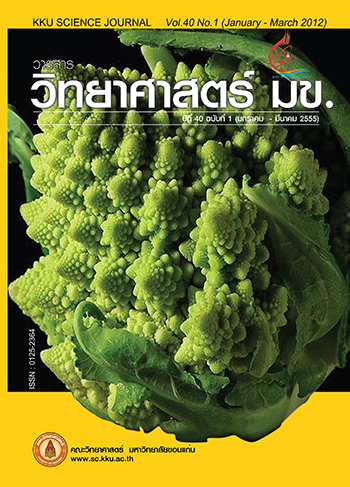Species Diversity, Biomass of Phytoplankton and Water Quality in Culture Ponds for Mekong Giant Catfish (Pangasianodon gigas) with Different Culture Systems
Main Article Content
Abstract
The objective of this research was to investigate the efficiency of 3 culture systems for the Mekong giant catfish (Pangasianodon gigas) (non natural food establishment, natural food estab¬lishment and mix system) on the species diversity, biomass of phytoplankton and water quality. The experiment was divided into 3 treatments; non natural food establishment (T1), natural food establishment (T2) and mix system (T3). The result showed that, the diversity of phytoplankton present in the pond belonged to 6 divisions, and 43 species, such as Cyanophyta, Chlorophyta, Chrysophyta, Euglenophyta, Pyrrophyta and Cryptophyta. Most of the species belonged to the Division Chlorophyta. The biomass of phytoplankton was found to be highest in treatment 2; natural food establishment. The dominant species of phytoplankton were Scenedesmus sp. and Euglena sp. There were significant differences (P 0.05) among the average water qualities. The information obtained can be used as a baseline for management and development in Pla Buk culture systems in the future.
Article Details

This work is licensed under a Creative Commons Attribution-NonCommercial-NoDerivatives 4.0 International License.


